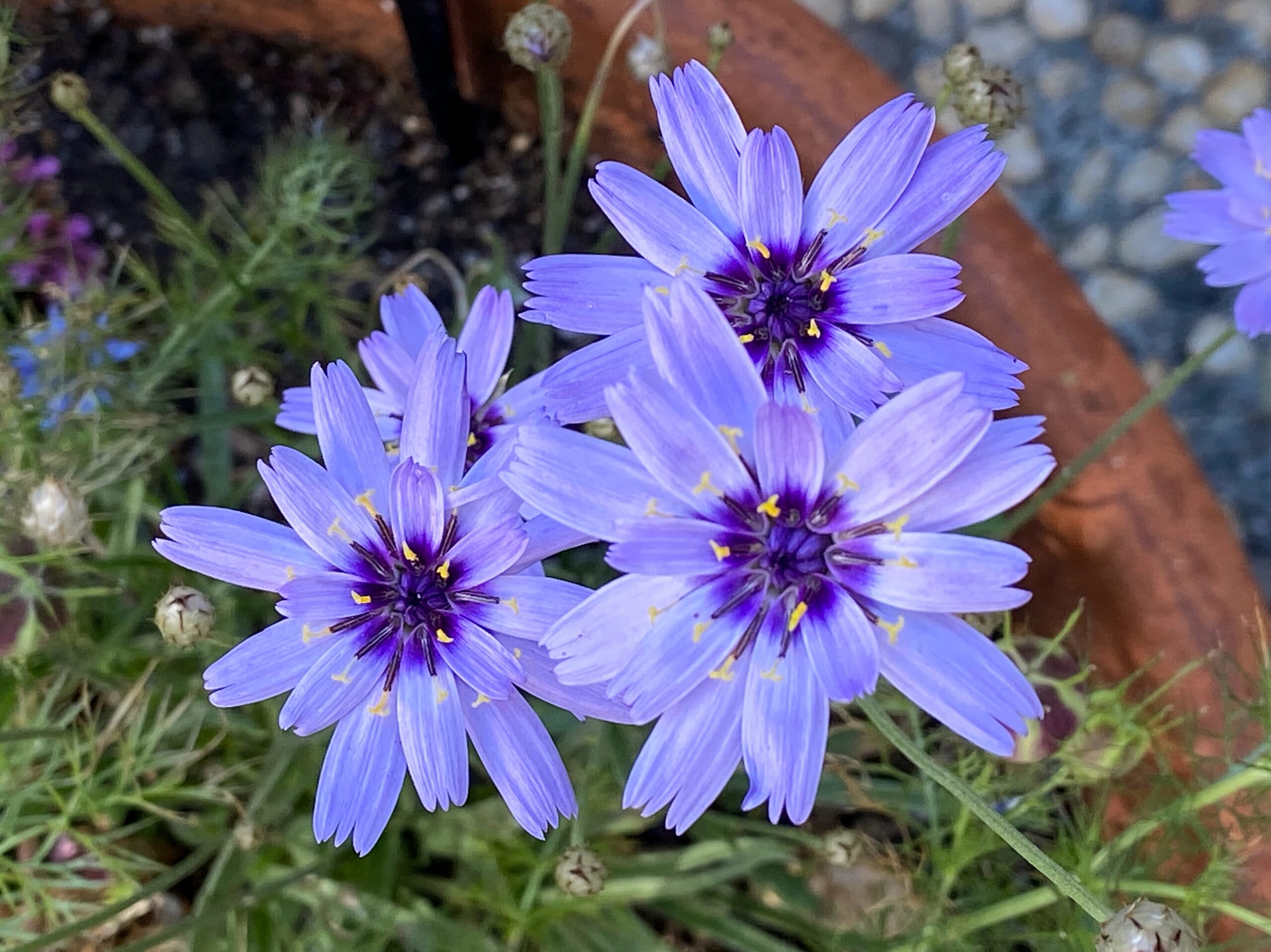“Cupid’s Dart” (Catananche caerulea ) provides masses of sturdy, upright stems topped by pearly-papery buds that open into these lovely semi-double, purple-eyed, lavender-blue, 2” blooms. Cupid’s Dart appear continuously from early to late summer, peaking in midsummer. Ancient Greeks and Romans used the flowers as the main ingredient in love potions, hence the amorous common name “Cupid’s Dart”.
Genus name (catananche) comes from the Greek name meaning a strong incentive. Specific epithet (caerulea) means dark blue in reference to flower color.
To 2’ tall and 20” across, this tough and EASY, fairly drought tolerant short-lived perennial makes the loveliest cut flowers. The pearly-silver seed heads are very pretty in dried arrangements, too! Grow Catananche caerulea in full sun in well-drained soil, such as a mixed herbaceous border or gravel. Can be divided and self-sows! COLD HARDY and deer resistant, plus butterflies! Plants are narrow and upright with sparse foliage; single specimens do not make much of a show so plant three or five in a group to make a better display.
Recommended Companion Plants:
- Artemisia
- Stachys byzantine
- Anthemis tinctoria (Golden Marguerite)
- Eryngium giganteum (Miss Willmott’s Ghost)
- Stipa tenuissima (Mexican Feather Grass)
- Coonvolvulus cneorum (Shrubby Bindweed)
- Dahlia ‘Happy Single Romeo’
- Allium sphaerocephalon (Drumstick Allium)
Details:
- Common Name: cupid’s dart
- Type: Herbaceous perennial
- Family: Asteraceae
- Native Range: Southwestern Europe
- Zone: 4 to 7
- Height: 1.00 to 2.00 feet
- Spread: 0.75 to 1.00 feet
- Bloom Time: July to September
- Bloom Description: Blue to lavender-blue
- Sun: Full sun
- Water: Medium
- Maintenance: Low
- Flower: Showy
- Attracts: Butterflies








